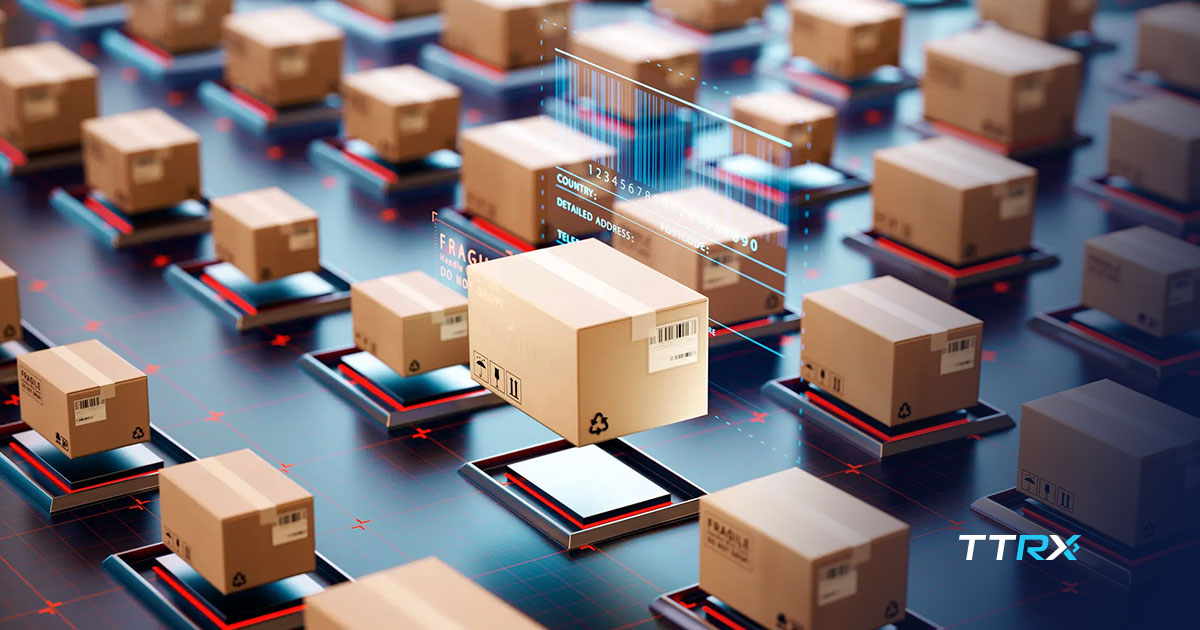Society and the means of production are constantly evolving, forming an ongoing process. Immersed within it; industry, which has already been through several major revolutions in centuries past, is currently experiencing its fourth revolution, allowing us to identify it as Industry 4.0. Innovation in information technology, automation, and smart production systems are notable highlights of it.
Here it is important to have integrated systems within and between different companies and throughout all their product life cycles; of which characterize the integrated supply chain. Managing this chain is a process that begins with the client’s demand and, mainly, their need to obtain information about the product or service offered.
It is worth mentioning that use of systems that integrate physical and virtual environments by sharing data in real time leads to improved process control, resulting in a more optimized process overall.
However, even if we perceive it in a positive way, the technological revolution that we are currently experiencing can bring adversities with it. One of the main challenges is the security of the information generated and transmitted, which increases the demand for smart grids throughout the production chain.
What technologies are used in a smart supply chain?
Much of the technology used in a smart supply chains has emerged alongside Industry 4.0. Key examples are Big Data, Internet of Things (IoT), cloud computing, and augmented reality (AR).
Big Data, the Internet of Things, and Cloud Computing are enabling technologies that, when used in an integrated way with artificial intelligence, simulations, and integration systems, enable other automation technology to be employed. Augmented reality (AR), on the other hand, is an application technology expected to improve production, procurement, and delivery processes. Together, these technologies provide great results in productivity through fully automated systems. Let’s learn a little more about them in the following text.
Big Data
Big Data is the name given to the set of technologies applied to the processing of large volumes of data generated from different sources. When applied, they present the possibility of providing results in a fast and efficient way, as well as having the flexibility when adjusting system configurations. It also becomes possible to interpret the clients’ future needs, thus reducing demand errors.
Internet of Things (IoT)
The Internet of Things is characterized by smart objects’ ability to interact with other devices and systems over the Internet, and can be used in a variety of areas, enabling interaction, communication, and smarter operation networks.
Cloud Computing
The principle of cloud computing is the use of virtual resource networks, unlimited data storage, and accessibility at any time via different types of platforms.
Its implementation is available for use by an organization (private), by a group of users with shared interests (community), open access (public), and hybrid, according to demand. In practice, cloud computing facilitates the data exchange between partners within a supply chain.
Augmented Reality (AR)
{% video_player “embed_player” overrideable=False, type=’scriptV4′, hide_playlist=True, viral_sharing=False, embed_button=False, autoplay=False, hidden_controls=False, loop=False, muted=False, full_width=False, width=’1920′, height=’1080′, player_id=’50070056844′, style=” %}
Augmented reality is technology that aids humans in their visual perception and corresponds to superimposition of virtual content onto real-time image broadcasts, combining barcodes, devices, and software.
Its greatest contribution to the supply chain is order picking, cargo handling, warehouse planning, and vehicle loading, bringing operational gains and the possibility to update the Warehouse Management System (WMS) in real time.
Smart Supply Chain Management as a competitive advantage
Supply chain management is used by companies as a competitive advantage, as it enables the establishment of new arrangements between production links, favoring transparency, the appropriate use of resources and, therefore, efficiency. In addition, there are gains in relationships between partners, favoring innovation and, especially, meeting the needs of the client.
In an ever-increasingly connected economic environment, it is necessary that activities and partners establish communication through a standardized language, especially when dealing with global operations, reinforcing external relationships. Therefore, it is important that the data flow is adequate enough to enable effective collaboration between these organizations. It is also important that managers evaluate the technology that best suits the needs of the supply chain.
Traceability and the Smart Supply Chain
Traceability is defined as the ability to follow the trajectory of an object, whether physical or non-physical. It also relates to the transparency and fault identification process from the origin of the products or services, whether they are complete or in parts. In other words, the trajectory from the raw material, through to manufacturing, to distribution and localization, and post-delivery.
Among the countless benefits of a smart supply chain, traceability is one of the most important because it provides cost reduction, operational efficiency, quality and safety assurance, process standardization, better relationships with suppliers and it reduces the need for high stocks. All these possibilities become feasible because when you implement traceability, you gain greater productive and distributive control over the chain itself.
Having access to real-time data allows for improved scenario planning and, consequently, more flexibility to respond to any changes, which benefits the traceability of the products throughout their life span, offering security to clients.
Essentially, traceability demands the association between the Internet of Things, cloud computing and Big Data, used to implement a system from which it is possible to monitor the products’ conditions in real time, either upstream, with the objective of identifying the origin, or downstream, following the path to the client. In this way, responses to regulatory standards within different sectors are improved.
Therefore, traceability is an important factor when considering the added value of a given product, considering that the visibility of a smart supply chain contributes to Social Responsibility and Sustainability by showing the origin of the products, which is fast becoming a growing demand among customers.
Smart Supply Chain and the Pharmaceutical Industry
A smart supply chain is a fundamental requirement for the pharmaceutical industry, as it has a direct bearing on the lives of patients, especially with the increasing globalization of the pharmaceutical market. Not surprisingly, governments in several countries have imposed a series of regulatory measures to increase safety in the distribution of pharmaceutical products.
For example, in the US, the Drug Supply Chain Security Act (DSCSA) was passed through congress in November 2013 which would set out the steps in which the Federal Drug Administration (FDA) could better control the pharmaceutical drug supply chain on a national scale by combating counterfeit, contaminated or otherwise dangerous drugs within the international supply chain. This would involve the creation of an interoperable electronic system which would identify and trace pharmaceutical drugs as they are distributed to the US.
Currently in Brazil, this industry faces several problems; such as the falsification of medicines, theft and smuggling, and the commercialization of the products without the registration of the National Health Surveillance Agency (Anvisa), without a tax register, and without scientific proof are thus forbidden to be sold in the country.
As a response to these issues, the National System for Drug Control (SNCM) was set up in Brazil, under Law 11,903 of 2009. As with the DSCSA, the purpose of this initiative was to establish the tracking of medicines throughout the production chain, from the supplier through to the end customer. In 2016, Law 13,410 established a deadline for regulation, testing, validation, and implementation of traceability in Brazil: April 28, 2022.

In turn, the implementation of the initiative demanded the use of technology to capture, store and transmit data on pharmaceutical products throughout national territory. To identify and register each product, serial codes will be used, of which technology being used for capturing is the two-dimensional bar code, a mechanism similar to the QR Code, called ‘Data Matrix’, capable of storing important and necessary information for the traceability of medicines.
After this serialization process, including packaging for marketing purposes, all movements must be recorded on a system interconnected to Anvisa’s platform. Therefore, the smart supply chain, based on the application of technologies and response potential, is the ideal solution to meet governmental demands and improve traceability – an obligation for the registration holder, the distributor and the dispenser, as well as being a consumer right.
Combining the technologies presented – cloud storage, Internet of Things and augmented reality – TrackTraceRX optimizes the entire supply chain, from raw materials to the end customer. Using serialization and drug traceability for the pharmaceutical industry, TrackTraceRX offers solutions that enable greater visibility of relevant product lifecycle information across the links of the supply chain with speed, efficiency and quality.
Go beyond conformity!




